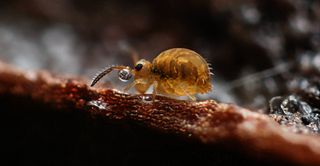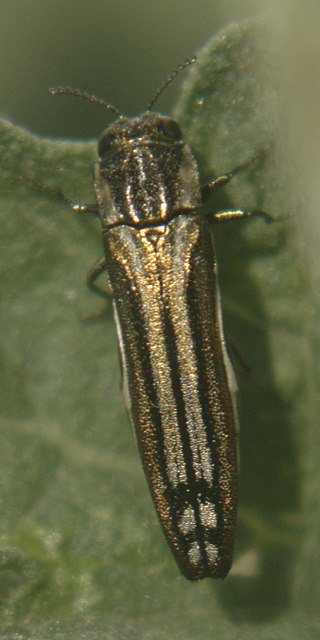
Herring are various species of forage fish, mostly belonging to the family of Clupeidae.

Heterotardigrades is a class that includes tardigrades that have cephalic appendages and legs with four separate but similar digits or claws on each. 444 species have been described.

The Ginkgoaceae is a family of gymnosperms which appeared during the Mesozoic Era, of which the only extant representative is Ginkgo biloba, which is for this reason sometimes regarded as a living fossil. Formerly, however, there were several other genera, and forests of ginkgo existed. Because leaves can take such diverse forms within a single species, these are a poor measure of diversity, although differing structures of wood point to the existence of diverse ginkgo forests in ancient times.

Perodicticinae is a subfamily of the family Lorisidae. It includes five species of African primates as shown under taxonomy below.

Sardine and pilchard are common names for various species of small, oily forage fish in the herring suborder Clupeoidei. The term 'sardine' was first used in English during the early 15th century; a somewhat dubious etymology says it comes from the Italian island of Sardinia, around which sardines were once supposedly abundant.

The Integrated Taxonomic Information System (ITIS) is an American partnership of federal agencies designed to provide consistent and reliable information on the taxonomy of biological species. ITIS was originally formed in 1996 as an interagency group within the US federal government, involving several US federal agencies, and has now become an international body, with Canadian and Mexican government agencies participating. The database draws from a large community of taxonomic experts. Primary content staff are housed at the Smithsonian National Museum of Natural History and IT services are provided by a US Geological Survey facility in Denver. The primary focus of ITIS is North American species, but many biological groups exist worldwide and ITIS collaborates with other agencies to increase its global coverage.

Packera aurea, commonly known as golden ragwort or simply ragwort, is a perennial flower in the family Asteraceae.

The great jacamar is a species of bird in the family Galbulidae. It is placed in the monotypic genus Jacamerops. It is found in Bolivia, Brazil, Colombia, Costa Rica, Ecuador, French Guiana, Guyana, Panama, Peru, Suriname, and Venezuela, where its natural habitat is subtropical and tropical moist lowland forests.

Chara is a genus of charophyte green algae in the family Characeae. They are multicellular and superficially resemble land plants because of stem-like and leaf-like structures. They are found in freshwater, particularly in limestone areas throughout the northern temperate zone, where they grow submerged, attached to the muddy bottom. They prefer less oxygenated and hard water and are not found in waters where mosquito larvae are present. They are covered with calcium carbonate (CaCO3) deposits and are commonly known as stoneworts. Cyanobacteria have been found growing as epiphytes on the surfaces of Chara, where they may be involved in fixing nitrogen, which is important to plant nutrition.

Staphylococcus is a genus of Gram-positive bacteria in the family Staphylococcaceae from the order Bacillales. Under the microscope, they appear spherical (cocci), and form in grape-like clusters. Staphylococcus species are facultative anaerobic organisms.

Elaphrus is a genus in the beetle family Carabidae. There are at least 40 described species in Elaphrus.

Sminthurinus is a genus of springtails and allies in the family Katiannidae. There are about 19 described species in Sminthurinus.

Katiannidae is a family of Collembola. Genera of the family include Sminthurinus and Vesicephalus.

Sminthurinus niger is a species of globular springtails in the family Katiannidae.
Sminthurinus latimaculosus is a species of globular springtail in the family Katiannidae.

Leptobunus aureus is a species of harvestman in the family Phalangiidae. It is found in North America.

Sminthurinus atrapallidus is a species of globular springtail in the family Katiannidae.

Agrilus aureus is a species of metallic wood-boring beetle in the family Buprestidae. It is found in Central America and North America.

Sminthurinus henshawi is a species of globular springtail in the family Katiannidae.

Sminthurinus quadrimaculatus is a species of globular springtail in the family Katiannidae.


















